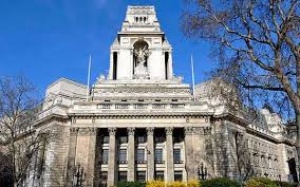Falling value of pound boosts North American visitors to UK

A study by STR and Tourism Economics indicates that the United Kingdom’s tourism and hospitality sectors have benefited from an increase in arrivals from North America, brought on by the devaluation of the British pound following the June EU Referendum.
According to the International Passenger Survey conducted by the UK Office for National Statistics, arrivals from North America were up 6.8 per cent between July and October 2016 when compared with the same period in 2015.
From January to June, the “pre-Brexit” vote period, arrivals from North America increased at a more modest rate of 0/5 per cent compared with first six months of 2015.
Meanwhile, arrivals from Europe have dropped off slightly following the referendum, down 0.1 per cent between July and October 2016.
Overall during the first ten months of 2016, international arrivals to the UK were up 1.7 per cent to 31.4 million.
ADVERTISEMENT
October 2016 year-to-date figures also show that holiday arrivals to the UK were down 3.7 per cent overall.
But between July and October, this rate of decline slowed somewhat to 2.9 per cent.
Meanwhile, business trips to the UK still showed growth in 2016, but slowed from 4.3 per cent between January and June to 1.8 per cent between July and October.
“While we’ve seen a recent slowdown in business travel to the UK, it’s important to put it in perspective that 2015 was a standout year for business arrivals, up 7.1 per cent compared with 2014,” said David Goodger, director for Tourism Economics in Europe.
“What remains to be seen is how holiday travel will be impacted in summer 2017.
“As the referendum vote occurred towards the end of June, when many already had July or August vacations planned, we’ll see how a favourable exchange rate for holiday visitors from North America will play out this coming summer.”
For UK hotels, performance growth has been mixed between London and Regional UK, essentially the whole country excluding the capital.
In 2016, hotels in Regional UK recorded a 3.1 per cent increase in RevPAR, driven solely by an increase in average daily rate as occupancy remained flat.
London, on the other hand, recorded a 0.9 per cent decline in RevPAR, brought on by flat ADR coupled with a 0.9 per cent drop in occupancy.
STR analysts attribute the decline to an increase in supply and a slow start to the year.
The most recent market forecast report from STR and Tourism Economics projects that hotels in London will be affected by shifts in demand throughout 2017, which will likely bring down both occupancy and ADR growth throughout the year.
On the other hand, hotels in Regional UK are expected to post RevPAR growth within the range of to two six per cent from month to month throughout 2017.
“While the capital has faced challenges in 2016, we have certainly not seen a slowdown in development,” said Robin Rossmann, STR international managing director.
“London currently has more than 15,000 hotel rooms under construction or planned for development, which is more than all countries in Europe except Germany and Russia.
“This supply growth will put downward pressure on occupancy levels, but recent signs are showing the weak sterling may help to grow arrivals sufficiently to offset this.
“For Regional UK hotels, an increase in ‘staycations’ should boost performance, as outbound travel has become more expensive for UK residents given the current exchange rate.”

